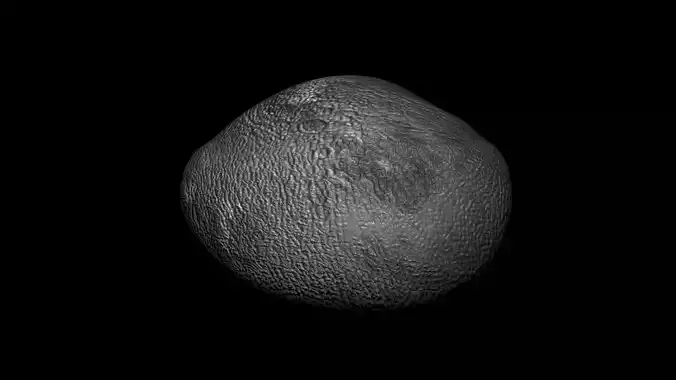1/14
DescriptionAdrastea Moon, also known as Jupiter XV, is the second by distance, and the smallest of the four inner moons of Jupiter. It was discovered in photographs taken by Voyager 2 in 1979, making it the first natural satellite to be discovered from images taken by an interplanetary spacecraft, rather than through a telescope. It was officially named after the mythological Adrasteia, foster mother of the Greek god Zeus—the equivalent of the Roman god Jupiter. Adrastea is one of the few moons in the Solar System known to orbit its planet in less than the length of that planet's day. It orbits at the edge of Jupiter's main ring and is thought to be the main contributor of material to the rings of Jupiter. Despite observations made in the 1990s by the Galileo spacecraft, very little is known about the moon's physical characteristics other than its size and the fact that it is tidally locked to Jupiter. Adrastea was discovered by David C. Jewitt and G. Edward Danielson in Voyager 2 probe photographs taken on July 8, 1979, and received the designation S/1979 J 1. Although it appeared only as a dot, it was the first moon to be discovered by an interplanetary spacecraft. Soon after its discovery, two other of the inner moons of Jupiter (Thebe and Metis) were observed in the images taken a few months earlier by Voyager 1. The Galileo spacecraft was able to determine the moon's shape in 1998, but the images remain poor. In 1983, Adrastea was officially named after the Greek nymph Adrastea, the daughter of Zeus and his lover Ananke. Although the Juno orbiter, which arrived at Jupiter in 2016, has a camera called JunoCam, it is almost entirely focused on observations of Jupiter itself. However, if all goes well, it should be able to capture some limited images of the moons Metis and Adrastea. Adrastea has an irregular shape and measures 20×16×14 km across. A surface area estimate would be between 840 and 1,600 (~1,200) km2. This makes it the smallest of the four inner moons. The bulk, composition, and mass of Adrastea are not known, but assuming that its mean density is like that of Amalthea, around 0.86 g/cm3, its mass can be estimated at 2 × 1015 kg. Amalthea's density implies that the moon is composed of water ice with a porosity of 10–15%, and Adrastea may be similar.
No surface details of Adrastea are known, due to the low resolution of available images.
OrbitAdrastea is the smallest and second-closest member of the inner Jovian satellite family. It orbits Jupiter at 70,200 mph at a radius of about 129,000 km (80,000 mi) (1.806 Jupiter radii) at the exterior edge of the planet's main ring. Its orbit has a very small eccentricity of around 0.0015 and an inclination relative to Jupiter's equator of 0.03°, respectively. Due to tidal locking, Adrastea rotates synchronously with its orbital period, keeping one face always looking toward the planet. Its long axis is aligned towards Jupiter, this being the lowest energy configuration. The orbit of Adrastea lies inside Jupiter's synchronous orbit radius (as does Metis's), and as a result, tidal forces are slowly causing its orbit to decay so that it will one day impact Jupiter. If its density is similar to Amalthea's then its orbit would actually lie within the fluid Roche limit. However, since it is not breaking up, it must still lie outside its rigid Roche limit.
Texture Resolution: 1920 x 1080
REVIEWS & COMMENTS
accuracy, and usability.














